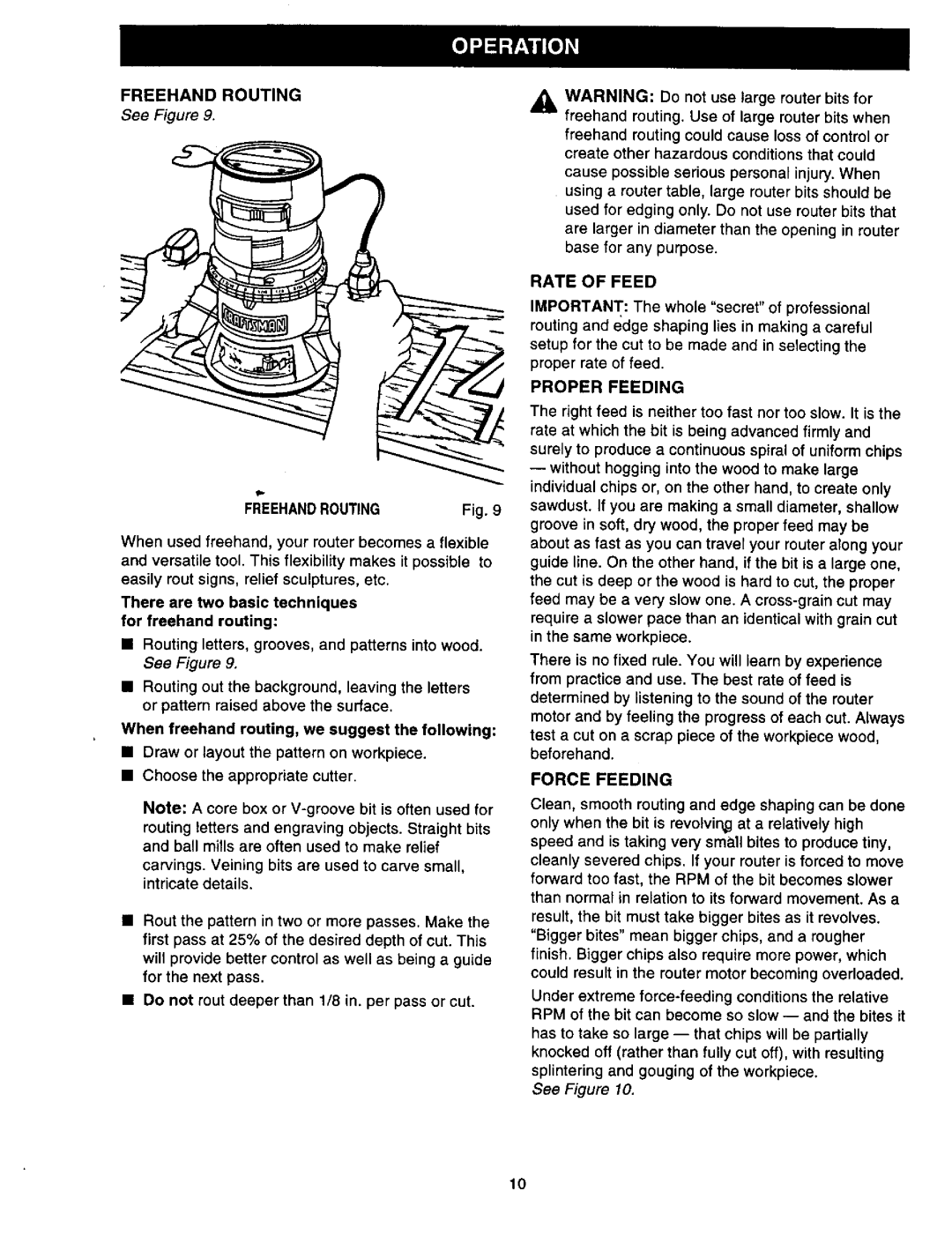
FREEHAND ROUTING
See Figure 9.
FREEHANDROUTING | Fig. 9 |
When used freehand, your router becomes a flexible and versatile tool. This flexibility makes it possible to easily rout signs, relief sculptures, etc.
There are two basic techniques for freehand routing:
•Routing letters, grooves, and patterns into wood. See Figure 9.
•Routing out the background, leaving the letters or pattern raised above the surface.
When freehand routing, we suggest the following:
•Draw or layout the pattern on workpiece.
•Choose the appropriate cutter.
Note: A core box or
routing letters and engraving objects. Straight bits and ball mills are often used to make relief
carvings. Veining bits are used to carve small, intricate details.
•Rout the pattern in two or more passes. Make the first pass at 25% of the desired depth of cut. This will provide better control as well as being a guide for the next pass.
•Do not rout deeper than 1/8 in. per pass or cut.
_k WARNING: Do not use large router bits for freehand routing. Use of large router bits when freehand routing could cause loss of control or create other hazardous conditions that could
cause possible serious personal injury. When using a router table, large router bits should be used for edging only. Do not use router bits that are larger in diameter than the opening in router base for any purpose.
RATE OF FEED
IMPORTANT: The whole "secret" of professional routing and edge shaping lies in making a careful setup for the cut to be made and in selecting the proper rate of feed.
PROPER FEEDING
The right feed is neither too fast nor too slow. It is the rate at which the bit is being advanced firmly and surely to produce a continuous spiral of uniform chips
--without hogging into the wood to make large individual chips or, on the other hand, to create only sawdust. If you are making a small diameter, shallow groove in soft, dry wood, the proper feed may be about as fast as you can travel your router along your guide line. On the other hand, if the bit is a large one, the cut is deep or the wood is hard to cut, the proper feed may be a very slow one. A
There is no fixed rule. You will learn by experience from practice and use. The best rate of feed is determined by listening to the sound of the router motor and by feeling the progress of each cut. Always test a cut on a scrap piece of the workpiece wood, beforehand.
FORCE FEEDING
Clean, smooth routing and edge shaping can be done only when the bit is revolvir_ at a relatively high speed and is taking very small bites to produce tiny, cleanly severed chips. If your router is forced to move forward too fast, the RPM of the bit becomes slower than normal in relation to its forward movement. As a result, the bit must take bigger bites as it revolves. "Bigger bites" mean bigger chips, and a rougher finish. Bigger chips also require more power, which could result in the router motor becoming overloaded.
Under extreme
has to take so large
See Figure 10.
10
